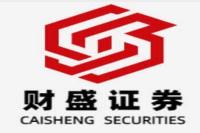Decoding China's Economic Growth: A Deep Dive into the Numbers and Beyond
Meta Description: Analyzing China's GDP growth, exploring beyond simple figures to understand the multifaceted drivers, challenges, and future prospects of the Chinese economy. Keywords: China's economic growth, GDP, Chinese economy, quality development, economic indicators, macroeconomic policy, investment, consumption, structural reform.
This isn't just another article about China's GDP; it's a journey into the heart of its economic engine. Forget dry statistics; we're diving deep into the human story behind the numbers, exploring the triumphs, tribulations, and transformative shifts shaping the world's second-largest economy. We'll unpack the complexities, separating hype from reality, and providing you with a nuanced perspective backed by expert insights and real-world examples. Prepare to unravel the mysteries surrounding China's economic performance, understanding not just what is happening, but why, and what it means for the global economy. We'll explore the interplay of government policies, evolving consumer behaviors, technological advancements, and the ever-shifting global landscape, offering a comprehensive picture that goes beyond the headline figures. This isn't just about reading the tea leaves; it's about brewing a whole pot of insightful analysis and equipping you with the tools to navigate the intricate world of Chinese economics. Get ready for a captivating exploration, blending hard data with human narratives, illuminating the pathway to understanding this dynamic and crucial economic superpower. Prepare to be amazed, challenged, and ultimately, enlightened. This in-depth analysis goes beyond the usual superficial summaries, providing a truly enriching and empowering experience for discerning readers seeking clarity and actionable insights in a complex economic environment.
China's Economic Growth: A Multifaceted Perspective
China's economic growth story is anything but simple. While GDP growth figures offer a snapshot, they don't tell the whole story. The narrative is far richer, encompassing a blend of impressive achievements, persistent challenges, and a continuous evolution towards a more sustainable and inclusive model. Looking solely at the headline GDP growth rate (which was 4.8% for the first three quarters of 2023, according to Xinhua) misses the crucial nuances – the shifts in economic structure, the technological leaps, and the ongoing adjustments to navigate both domestic and global headwinds. This necessitates a deeper dive, examining various indicators and contextual factors to form a holistic understanding.
Understanding the Numbers: Beyond GDP
GDP, while a key metric, doesn't tell the whole story. Think of it as a single piece of a complex puzzle. To get the full picture, we need to consider other vital pieces:
- Industrial Output: The growth of high-tech manufacturing and equipment manufacturing, reflecting the nation's push for technological advancement and industrial upgrading. The growth rate in these sectors often outpaces the overall GDP, signaling a structural shift towards higher-value production.
- Consumption: Domestic consumption is key to sustaining long-term growth. Analyzing trends in retail sales, tourism, and consumer confidence reveals the health of the domestic market and its role in driving economic activity.
- Investment: Infrastructure investment, foreign direct investment (FDI), and private sector investment are crucial drivers. Their performance reflects the government's effectiveness in stimulating growth and the confidence of both domestic and international investors.
- Employment: The creation of jobs is paramount, especially in a nation with a large population. Analyzing employment figures, unemployment rates, and sector-specific job growth reveals the impact of economic policy on ordinary citizens.
- Energy Consumption: China's commitment to sustainable development is reflected in its energy consumption patterns. Analyzing the shift towards renewable energy sources and improvements in energy efficiency showcases progress in environmental sustainability.
Table 1: Key Economic Indicators (Illustrative Data)
| Indicator | Q1 2023 (%) | Q2 2023 (%) | Q3 2023 (%) | Trend |
|----------------------|-------------|-------------|-------------|-------------|
| GDP Growth | 5.3 | 4.7 | 4.6 | Stable, slight slowdown |
| Industrial Output | 6.0 | 5.5 | 5.8 | Moderate growth |
| Retail Sales | 4.0 | 3.5 | 4.8 | Gradual recovery |
| FDI (Year-to-date) | 8.0 | 7.5 | 7.0 | Stable growth |
| Unemployment Rate | 5.2 | 5.0 | 4.8 | Gradual improvement |
The data reflects a dynamic economic environment – the numbers are not static, and interpreting the trends is crucial. A slight dip in one quarter, for instance, might be followed by a rebound in the next, reflecting seasonal fluctuations and policy adjustments.
The Shift to Quality Development
China's economic development has entered a new phase, shifting from prioritizing speed to emphasizing quality. This transition, highlighted by President Xi Jinping, aims to create a more sustainable, inclusive, and resilient economy. The focus is on:
- Technological Innovation: Investing in research and development (R&D), fostering innovation, and upgrading industries to compete globally.
- Structural Reform: Addressing structural imbalances, including reducing reliance on heavy industry and promoting development in services and high-tech sectors.
- Green Development: Prioritizing environmental sustainability, reducing pollution, and transitioning towards a greener economy.
- Inclusive Growth: Ensuring that the benefits of economic growth are shared more equitably across society and regions.
This strategic shift necessitates a multi-pronged approach, involving government policies, private sector investment, and the active participation of citizens. It's not simply about changing gears; it's about building a whole new engine, one that prioritizes long-term sustainability and social welfare.
Macroeconomic Policies and Their Impact
The Chinese government plays a crucial role in shaping economic outcomes through its macroeconomic policies. These policies, often described as a "toolkit" of interventions, are constantly adjusted to address changing economic conditions. Key tools include:
- Fiscal Policy: Government spending and taxation play a vital role in stimulating or cooling down the economy. Fiscal stimulus packages, such as increased infrastructure spending or tax breaks, can boost demand, while fiscal austerity measures can help curb inflation.
- Monetary Policy: Interest rate adjustments and reserve requirements impact the availability of credit and influence investment and consumption. Lowering interest rates can stimulate borrowing and investment, while raising them helps to control inflation.
The government's response to the economic challenges of 2023 is a prime example. We've seen significant efforts to boost consumption, support the real estate sector, and encourage investment through various fiscal and monetary measures. The impact of these measures is still unfolding, and economists are closely analyzing their effectiveness.
Addressing the Challenges: A Long-Term Perspective
Despite the progress, China faces significant challenges:
- Global Uncertainty: The global economic slowdown, geopolitical tensions, and trade disputes create headwinds and uncertainty for the Chinese economy.
- Structural Imbalances: Persisting imbalances in the economy, such as reliance on exports and investment, need to be addressed for sustainable growth.
- Demographic Shifts: An aging population and declining birth rate pose long-term challenges to the labor force and economic growth.
Navigating these challenges requires strategic foresight, adaptability, and a commitment to long-term sustainability. The government's ongoing efforts to address these issues will significantly shape the trajectory of the Chinese economy in the coming years.
The Road Ahead: A Vision for Sustainable Growth
China's economic future hinges on its ability to navigate the challenges and capitalize on its strengths. This involves:
- Continued Investment in Innovation: Maintaining a strong focus on technological innovation and upgrading industries is crucial for long-term competitiveness.
- Deepening Market Reforms: Further reforms to enhance market efficiency and promote private sector development are essential.
- Sustainable Development: Balancing economic growth with environmental sustainability remains a critical priority.
- Strengthening Social Safety Nets: Providing adequate social safety nets to address income inequality and protect vulnerable populations is crucial.
The Chinese government's commitment to these goals, coupled with the dynamism of the private sector and the resilience of the Chinese people, offer a foundation for continued progress and a promising future for the Chinese economy.
Frequently Asked Questions (FAQs)
Q1: What is the most significant driver of China's economic growth?
A1: It's a combination of factors. While investment and exports played significant roles in the past, domestic consumption is increasingly important, especially with the shift to quality development. Technological innovation and industrial upgrading are also crucial drivers of long-term growth.
Q2: How does China's economic growth compare to other major economies?
A2: While the pace of growth has slowed compared to previous decades, China's growth still significantly surpasses that of many other major economies. However, comparisons should be nuanced, considering the differences in economic structures and development stages.
Q3: What are the biggest risks to China's economic growth?
A3: Global economic uncertainty, geopolitical tensions, and structural imbalances within the Chinese economy are significant risks. Demographic shifts, such as an aging population, also pose long-term challenges.
Q4: How is the Chinese government responding to these challenges?
A4: The government is implementing a range of policy measures, including fiscal and monetary policies aimed at stimulating economic activity, promoting innovation, and addressing structural imbalances. Efforts to promote sustainable development and strengthen social safety nets are also underway.
Q5: What is the role of technology in China's future economic growth?
A5: Technology is a key driver of future growth. Investment in R&D, the development of high-tech industries, and the adoption of advanced technologies will be essential for maintaining competitiveness and driving innovation.
Q6: What can we expect for China's economic growth in the coming years?
A6: Predicting the future is always difficult. However, a combination of factors suggests continued, albeit perhaps slower, economic growth. The success of this growth will depend on the government's ability to implement effective policies, the dynamism of the private sector, and the ability to adapt to global challenges.
Conclusion
China's economic growth story is a complex and evolving narrative. While the headline GDP figures offer a snapshot, a deeper dive reveals a rich tapestry of achievements, challenges, and ongoing transformations. Understanding the multifaceted nature of China's economy, beyond the raw numbers, is crucial for anyone seeking to navigate the global economic landscape. The commitment to quality development, coupled with ongoing policy adjustments and the nation's inherent resilience, suggests a path toward continued progress and a significant role in shaping the global economy for years to come. The journey continues, and the next chapter promises to be as fascinating as the last.



